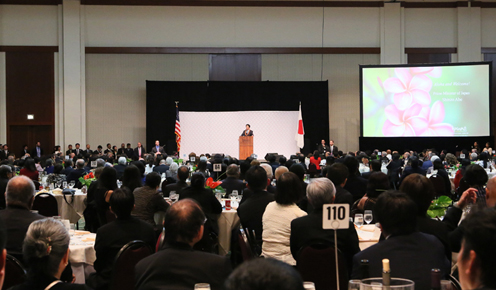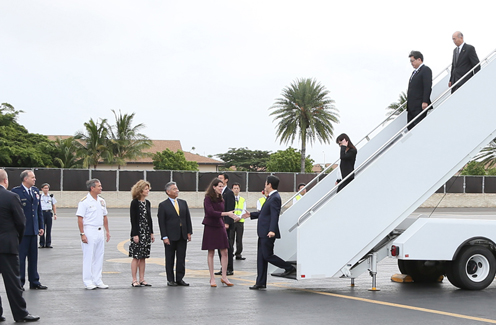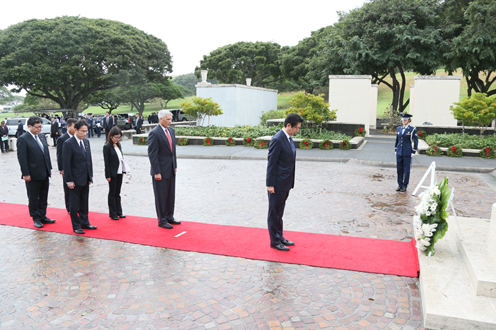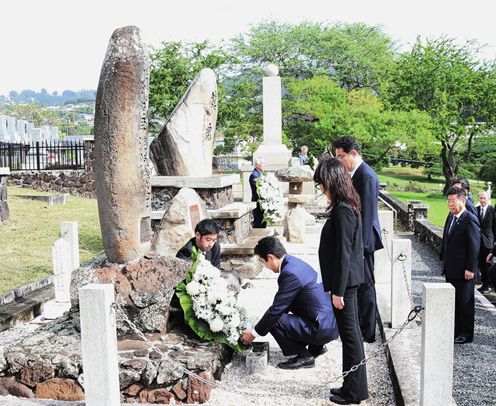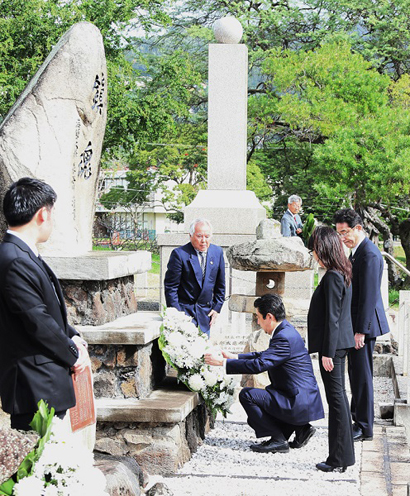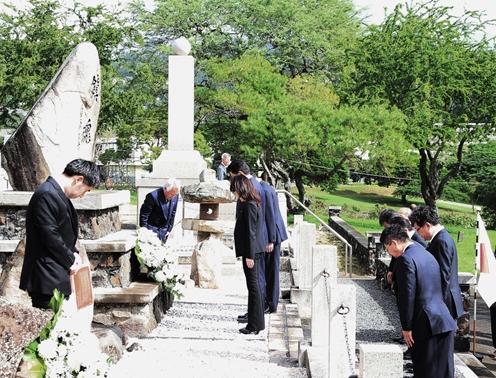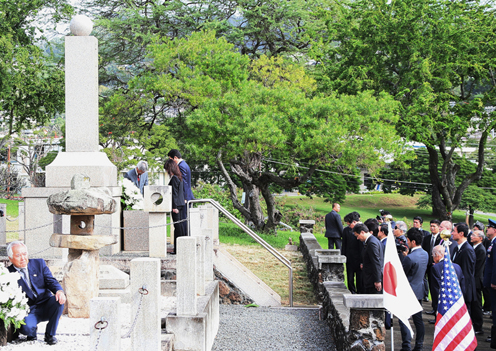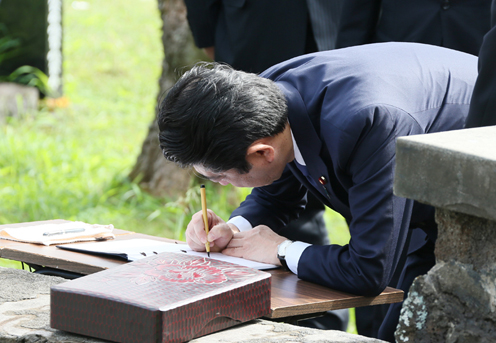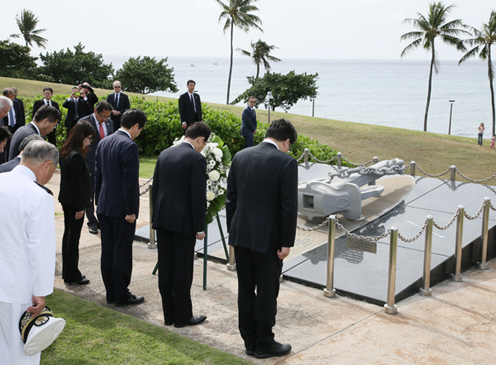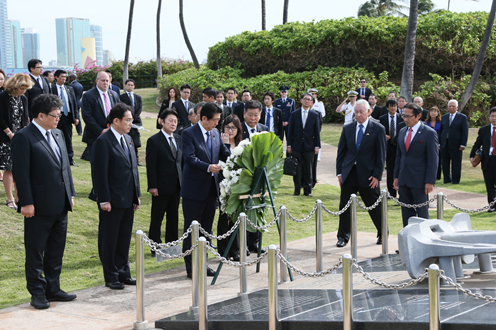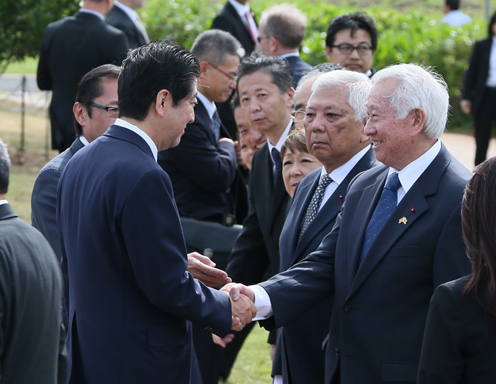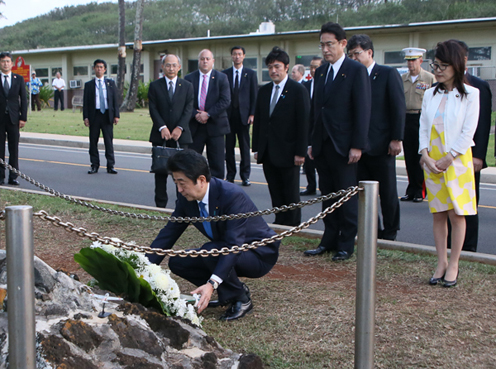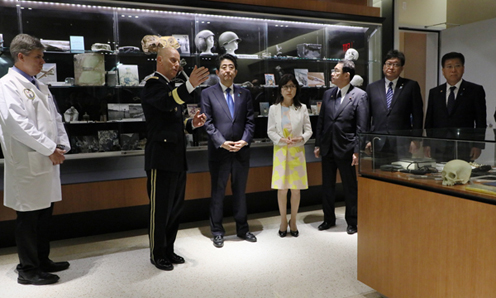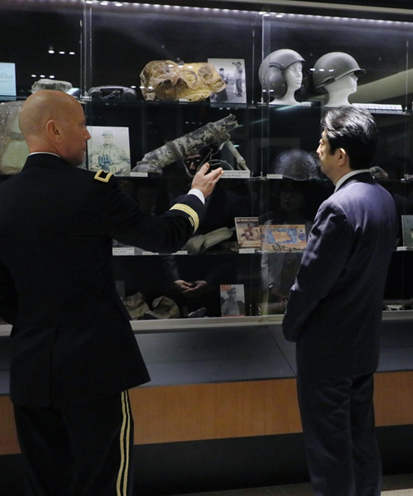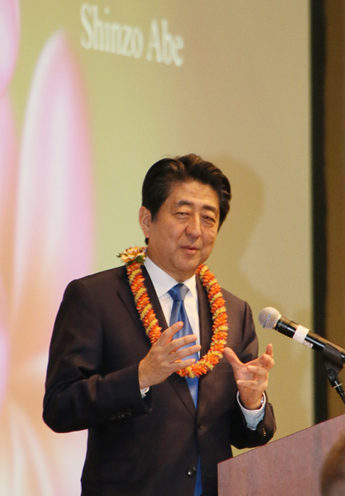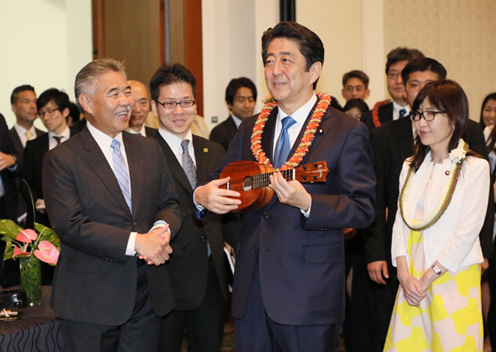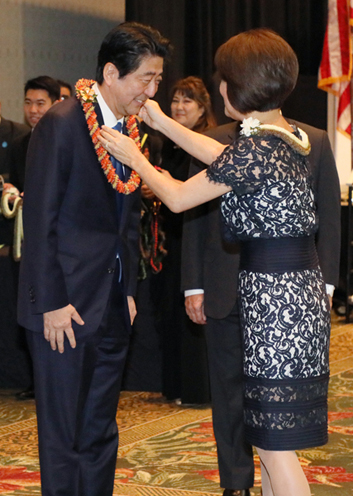Home > News > The Prime Minister in Action > December 2016 > Visit to the United States: First Day
The Prime Minister in Action
Visit to the United States: First Day
December 26, 2016
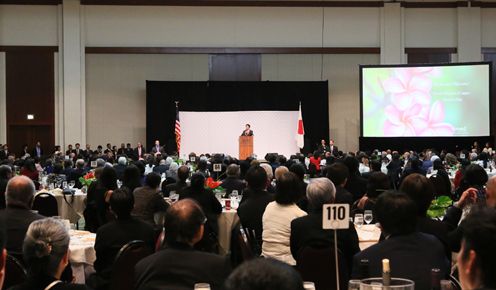
Photograph of the dinner banquet with people of Japanese descent (1)
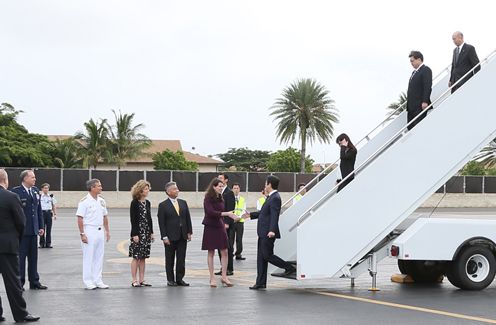
Photograph of the Prime Minister arriving in the United States (1)
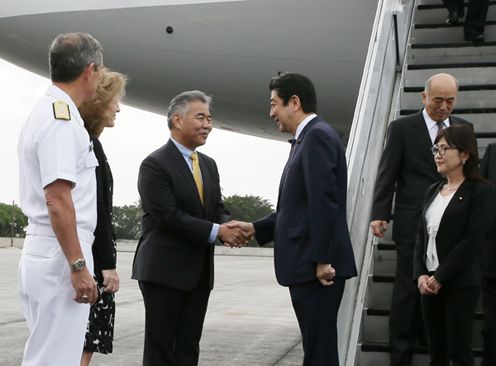
Photograph of the Prime Minister arriving in the United States (2)
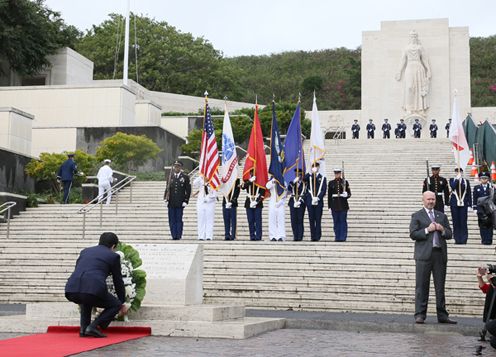
Photograph of the Prime Minister at the National Memorial Cemetery of the Pacific (1)
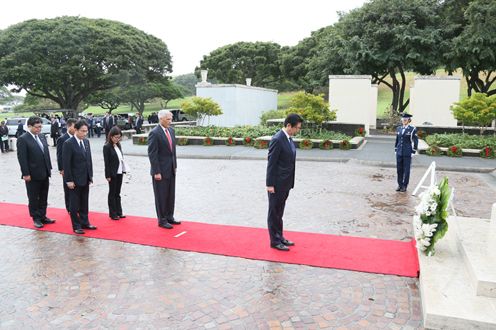
Photograph of the Prime Minister at the National Memorial Cemetery of the Pacific (2)

Photograph of the Prime Minister at the National Memorial Cemetery of the Pacific (3)
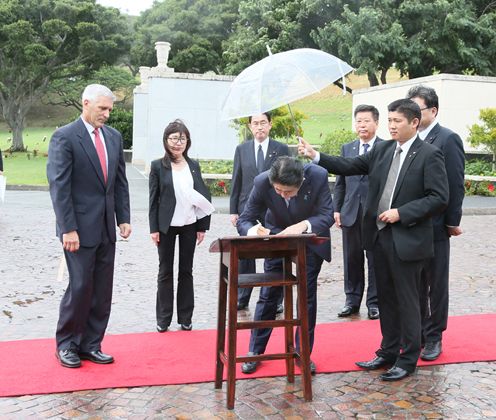
Photograph of the Prime Minister at the National Memorial Cemetery of the Pacific (4)
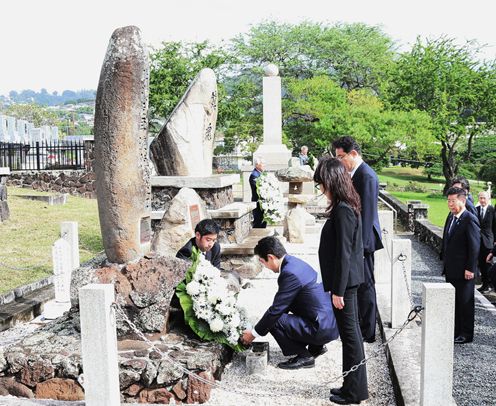
Photograph of the Prime Minister at the Makiki Japanese Cemetery (1)
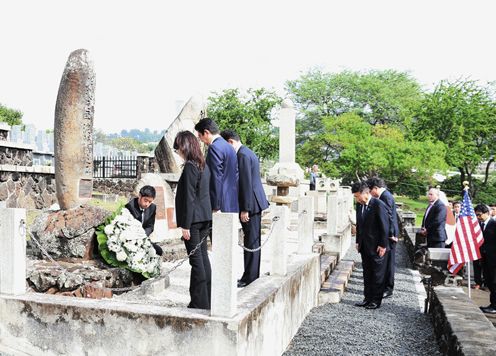
Photograph of the Prime Minister at the Makiki Japanese Cemetery (2)

Photograph of the Prime Minister at the Makiki Japanese Cemetery (3)
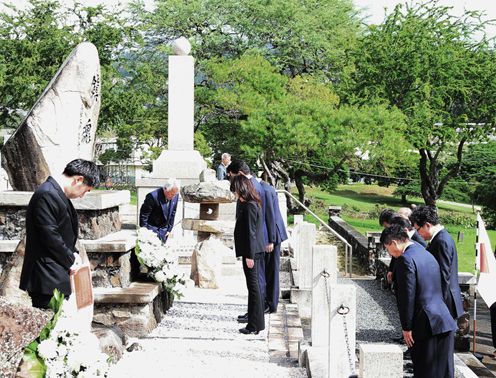
Photograph of the Prime Minister at the Makiki Japanese Cemetery (4)
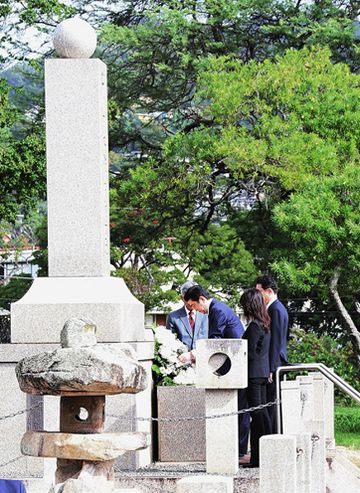
Photograph of the Prime Minister at the Makiki Japanese Cemetery (5)

Photograph of the Prime Minister at the Makiki Japanese Cemetery (6)
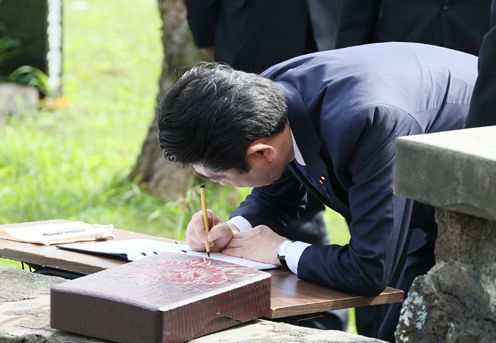
Photograph of the Prime Minister at the Makiki Japanese Cemetery (7)
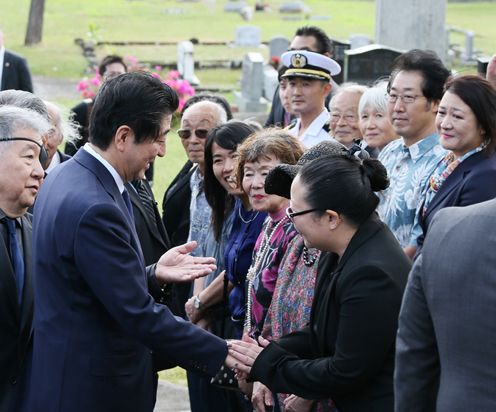
Photograph of the Prime Minister at the Makiki Japanese Cemetery (8)
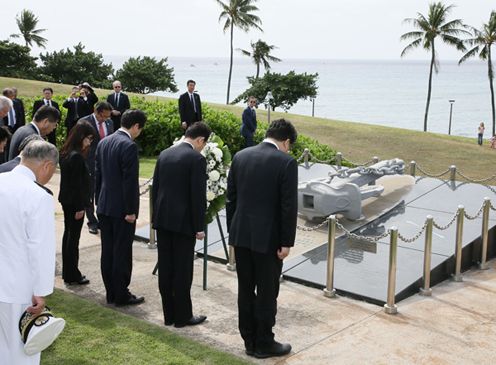
Photograph of the Prime Minister at the Ehime Maru Memorial (1)
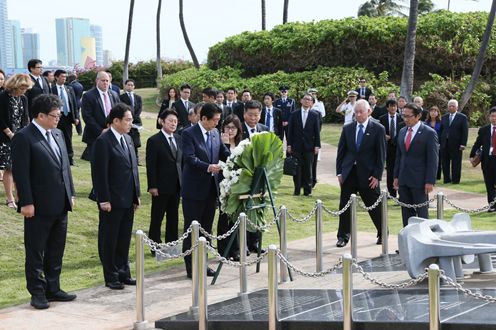
Photograph of the Prime Minister at the Ehime Maru Memorial (2)
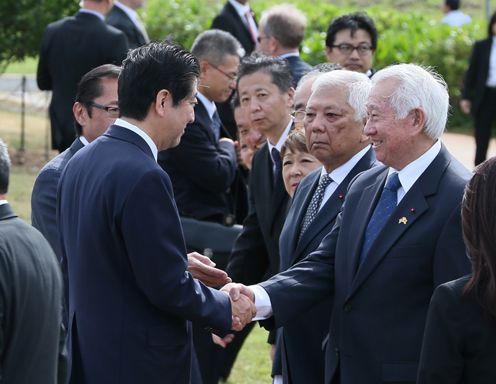
Photograph of the Prime Minister at the Ehime Maru Memorial (3)
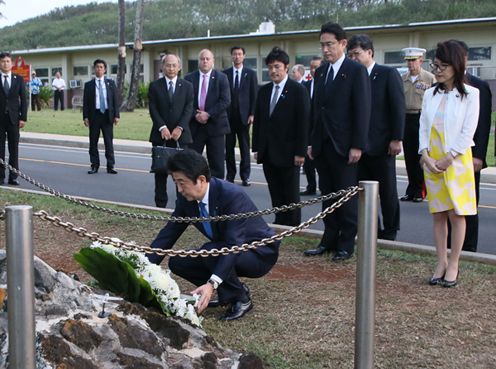
Photograph of the Prime Minister offering a wreath at the Lieutenant Fusata Iida Memorial
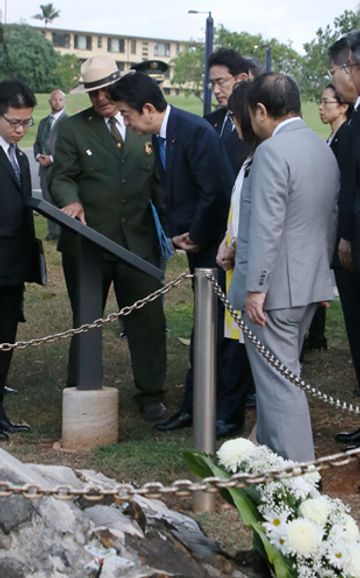
Photograph of the Prime Minister receiving an explanation about the Lieutenant Fusata Iida Memorial
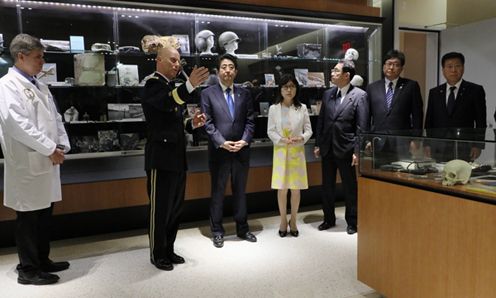
Photograph of the Prime Minister’s visit to the Central Identification Laboratory (1)
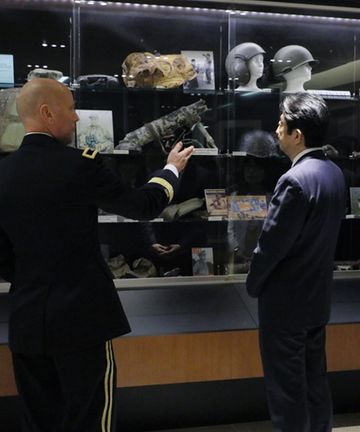
Photograph of the Prime Minister’s visit to the Central Identification Laboratory (2)
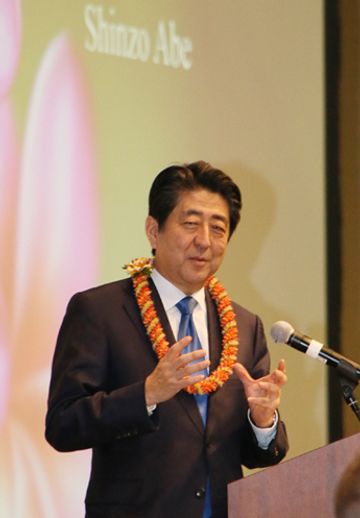
Photograph of the Prime Minister delivering an address at the dinner banquet with people of Japanese descent

Photograph of the dinner banquet with people of Japanese descent (2)
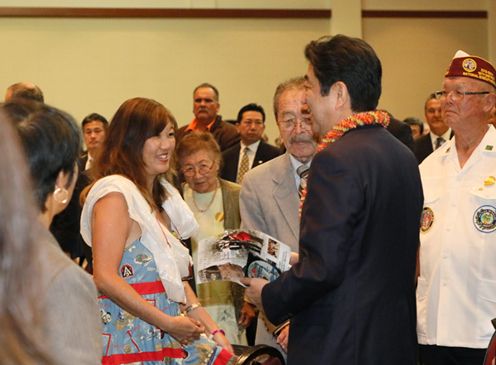
Photograph of the dinner banquet with people of Japanese descent (3)
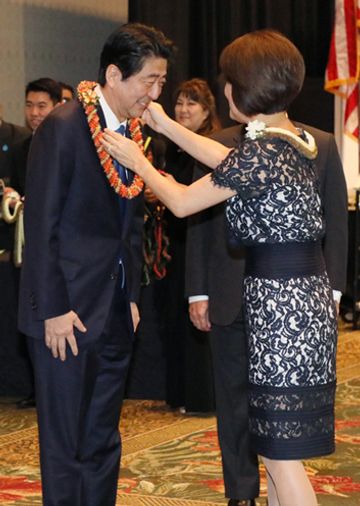
Photograph of the dinner banquet with people of Japanese descent (4)
[Provisional Translation]
On December 26 (local time), Prime Minister Shinzo Abe visited Honolulu in the United States of America.
The Prime Minister offered wreaths at the National Memorial Cemetery of the Pacific, the Makiki Japanese Cemetery, the Ehime Maru Memorial, and the Lieutenant Fusata Iida Memorial. The Prime Minister then visited the Central Identification Laboratory of the Defense POW/MIA Accounting Agency, United States Department of Defense, before attending a dinner banquet with people of Japanese descent.
In his address at the dinner banquet, the Prime Minister said,
“Good evening, everyone. Aloha. When you all say ‘Aloha’ to me, I feel warmly welcomed.
Since 1868, the first year of the Meiji Period, many people with big dreams have emigrated to Hawaii from Japan. However, I have heard that their labor in the sugarcane plantations under the blazing sun was harsher than they had expected, and in the face of these tough conditions, their early dreams were short-lived.
Nevertheless, I have been told that the Issei, or members of the first generation, put up with their hardship, thinking that ‘it can’t be helped’ or ‘shikata ga nai,’ and passed their own dreams and hopes on to the children of the next generation. My thoughts turned to your predecessors in Hawaii when I visited the Makiki Japanese Cemetery today.
After the attack on Pearl Harbor 75 years ago, people of Japanese descent were placed in the position of having their two homelands divided against each other. The distinguished service of the 100th Infantry Battalion and the 442nd Regimental Combat Team, both comprised of people of Japanese descent, is famous. I feel deeply moved by the fact that many Nisei or second-generation people of Japanese descent demonstrated their loyalty to the country that brought them up and that they felt duty-bound to serve, and gave their all to protect their families.
When I visited the United States in May last year, I also offered a wreath at the Go For Broke Monument for Japanese-American World War II veterans. Today I would like to once again express my heartfelt respect to all of the second-generation veterans of Japanese descent.
Former Governor of Hawaii George Ariyoshi and his wife Jean Ariyoshi have kindly joined us here today. They were also friends of my father. I am aware that a phrase that Governor Ariyoshi treasured from the time when he was serving as governor, which expressed his feeling of gratitude, was ‘okage sama de,’ meaning ‘with obligation to all.’
As World War II drew to a close, Governor Ariyoshi enlisted in the army, and after the end of the war, he served as a member of the forces occupying Japan. In front of the building where he worked at that time, there were apparently always groups of poor young boys hanging around, who had lost their parents in the war and were working as shoe-shine boys. Governor Ariyoshi took a liking to one of the boys who, though dressed shabbily, always took his work seriously. One day, feeling sorry for the boy, who was always hungry, Governor Ariyoshi made him some sandwiches in the kitchen. When he gave them to the boy, saying, ‘You must be hungry; eat these,’ the boy wrapped them in a napkin and put them away carefully in his shoe box.
Apparently, when Governor Ariyoshi said, ‘You don’t need to be shy, you can eat them now,’ the boy said, ‘I will share these sandwiches you have kindly given me with my hungry little sister at home,’ and gave a well-mannered and deep bow. This boy, despite being shabbily dressed and always hungry, never forgot to show kindness to his younger sister, and responded politely to Governor Ariyoshi. Seeing this, Governor Ariyoshi felt deeply moved.
Governor Ariyoshi, shocked by the sight of Japan, which had lost the war and lay in miserable devastation, says that when he saw this boy, who no matter how poor he was, retained his pride and good manners, and did not forget to be kind to others, he realized that, like this boy, he himself also had Japanese blood, and was able to feel pride in this heritage.
After the Great East Japan Earthquake of March 11, 2011, I heard this story from Governor Ariyoshi, who was then visiting Japan, and was truly encouraged. I recall now that at the time I vowed in my heart that, in the spirit that Governor Ariyoshi experienced in 1945 of never forgetting to be proud of Japan and of being Japanese, we too must recover from the disaster.
I am sure that many people of Japanese descent have overcome a great many difficulties, while feeling both proud of their Japanese roots, and at the same time pride and loyalty towards their homeland, the United States. As the Prime Minister of Japan, I would like to express my thanks and gratitude to all the people of Japanese descent for your contributions to Hawaii and to the United States, and for the major role you have played as a bridge between Japan and the United States.
Hawaii has always been a place that I have held in high esteem. Before the war, my grandmother’s cousin emigrated to Hawaii. Her name was Hanako, a very common Japanese girl’s name at the time, and she was one of the émigrés from Yamaguchi Prefecture. She married a Mr. Nakata, and after that they often sent us various wonderful delicious things from Hawaii. At the time Japan was still poor. Even now, I remember the candy lei she sent us, made with so much chewing gum and chocolate. My older brother and I fought over the candy lei, and as a result, it broke. Even now, I recall how I cried for an entire day over that lei. I wondered if the people of Hawaii ate such delicious things every day. I remember desperately wanting to visit Hawaii. The first time I saw a genuine pineapple was when the Nakatas sent us one. Up until then, my father, mother, brother and I had only ever seen canned pineapple, so we looked at the real pineapple for quite a while, trying to figure out how to eat it.
I am delighted that I am now able to visit Hawaii, which I had always thought so highly of, as Prime Minister, and that I am spending this enjoyable evening with all you wonderful people of Japanese descent, of whom we Japanese people feel very proud.
Furthermore, many people are attending today who have a link with Japanese-American communities, or a connection with Japan, including Admiral Harry B. Harris, Jr., Commander of the US Pacific Command, and Admiral Katsutoshi Kawano, Chief of Staff of the Joint Staff of the Japan Self-Defense Forces, whose father was on board a submarine that took part in the Pearl Harbor operation. That is to say that Admiral Kawano’s father actually participated in the attack on Pearl Harbor, whereas his son, Admiral Kawano, is now playing a central role in strengthening the bonds of the Japan-US Alliance.
Tomorrow I will visit Pearl Harbor with President Barack Obama. We will pay our respects there, and I would like to show Japan and the United States, as well as the rest of the world, the power of reconciliation. As an ‘Alliance of Hope,’ Japan and the United States will continue to jointly face the various issues facing the region and world, and to jointly address them.
I would like to express my heartfelt thanks to Governor David Yutaka Ige and his wife Dawn Amano-Ige, for jointly hosting this event. Governor Ige’s father was a Sansei or third-generation person of Japanese descent who served in the 100th Infantry Battalion, while his mother comes from my hometown, Yamaguchi Prefecture. Once again, I would like to offer my sincere thanks.
I would like to end my remarks by once again expressing my profound gratitude to all those in attendance today, many of whom have taken the time to travel here from all over.
I would now like to raise a toast to the longevity and good health of everyone here this evening.”

